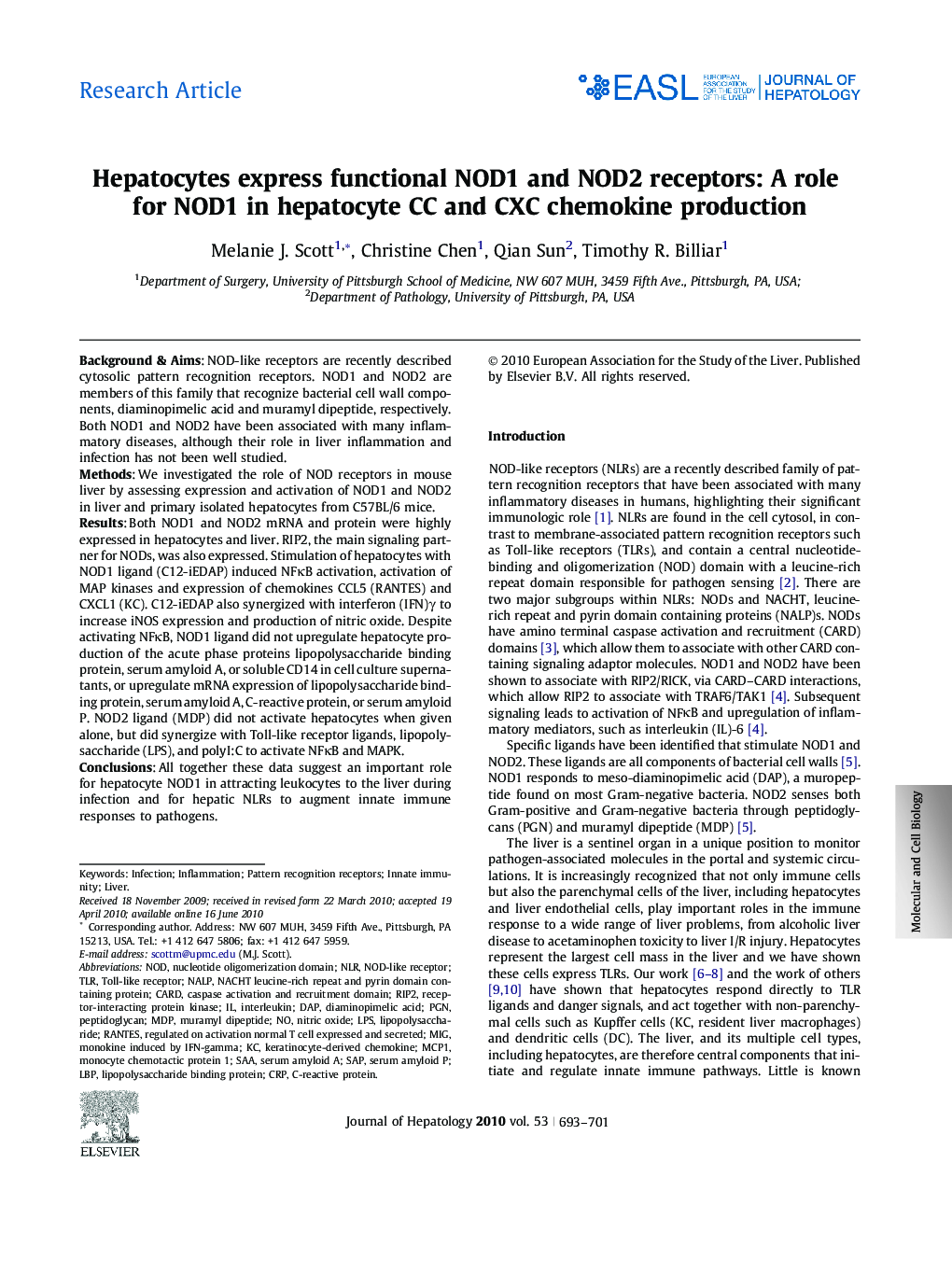| Article ID | Journal | Published Year | Pages | File Type |
|---|---|---|---|---|
| 6108937 | Journal of Hepatology | 2010 | 9 Pages |
Background & AimsNOD-like receptors are recently described cytosolic pattern recognition receptors. NOD1 and NOD2 are members of this family that recognize bacterial cell wall components, diaminopimelic acid and muramyl dipeptide, respectively. Both NOD1 and NOD2 have been associated with many inflammatory diseases, although their role in liver inflammation and infection has not been well studied.MethodsWe investigated the role of NOD receptors in mouse liver by assessing expression and activation of NOD1 and NOD2 in liver and primary isolated hepatocytes from C57BL/6 mice.ResultsBoth NOD1 and NOD2 mRNA and protein were highly expressed in hepatocytes and liver. RIP2, the main signaling partner for NODs, was also expressed. Stimulation of hepatocytes with NOD1 ligand (C12-iEDAP) induced NFκB activation, activation of MAP kinases and expression of chemokines CCL5 (RANTES) and CXCL1 (KC). C12-iEDAP also synergized with interferon (IFN)γ to increase iNOS expression and production of nitric oxide. Despite activating NFκB, NOD1 ligand did not upregulate hepatocyte production of the acute phase proteins lipopolysaccharide binding protein, serum amyloid A, or soluble CD14 in cell culture supernatants, or upregulate mRNA expression of lipopolysaccharide binding protein, serum amyloid A, C-reactive protein, or serum amyloid P. NOD2 ligand (MDP) did not activate hepatocytes when given alone, but did synergize with Toll-like receptor ligands, lipopolysaccharide (LPS), and polyI:C to activate NFκB and MAPK.ConclusionsAll together these data suggest an important role for hepatocyte NOD1 in attracting leukocytes to the liver during infection and for hepatic NLRs to augment innate immune responses to pathogens.
